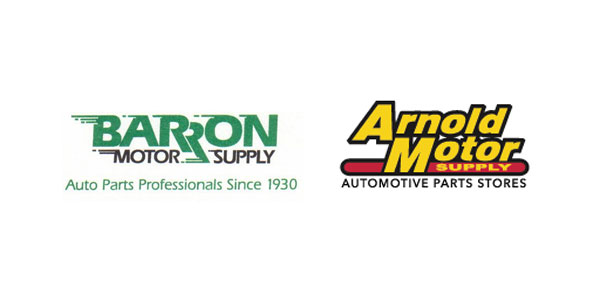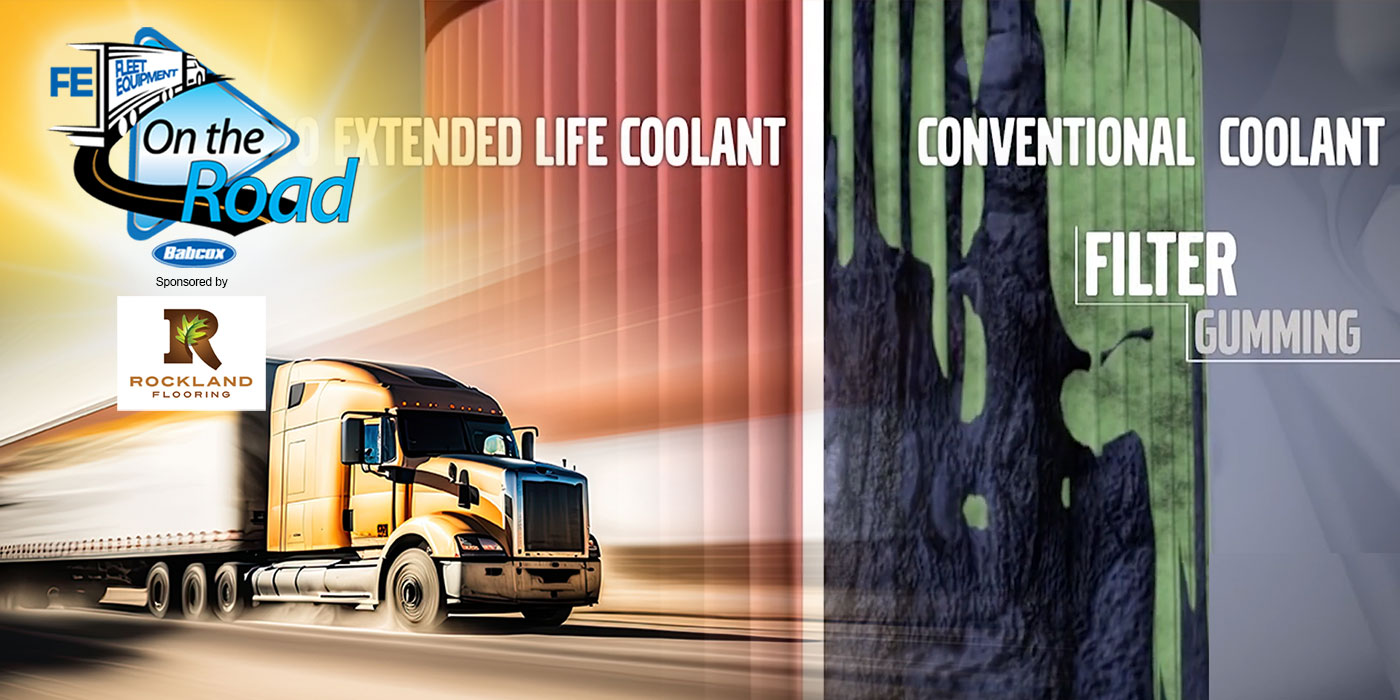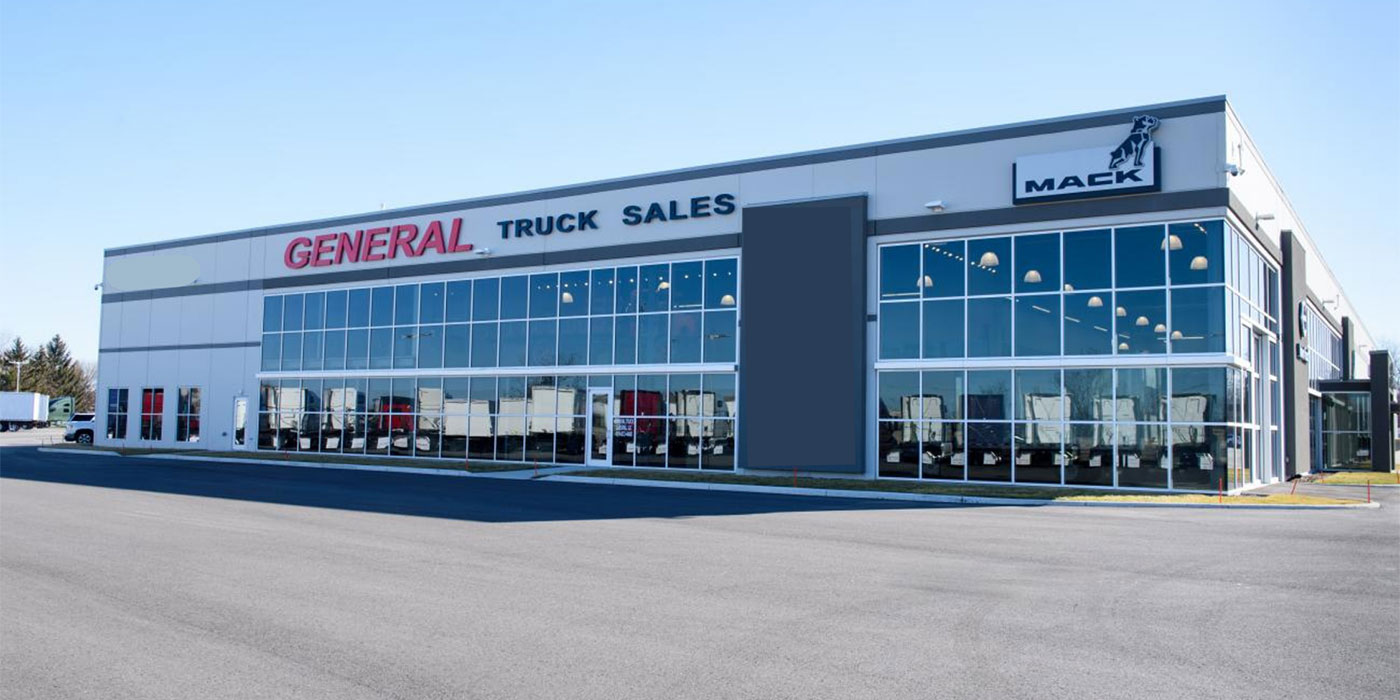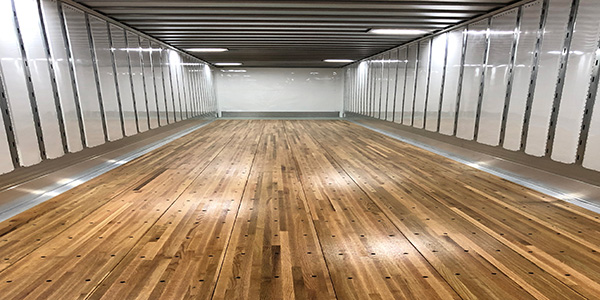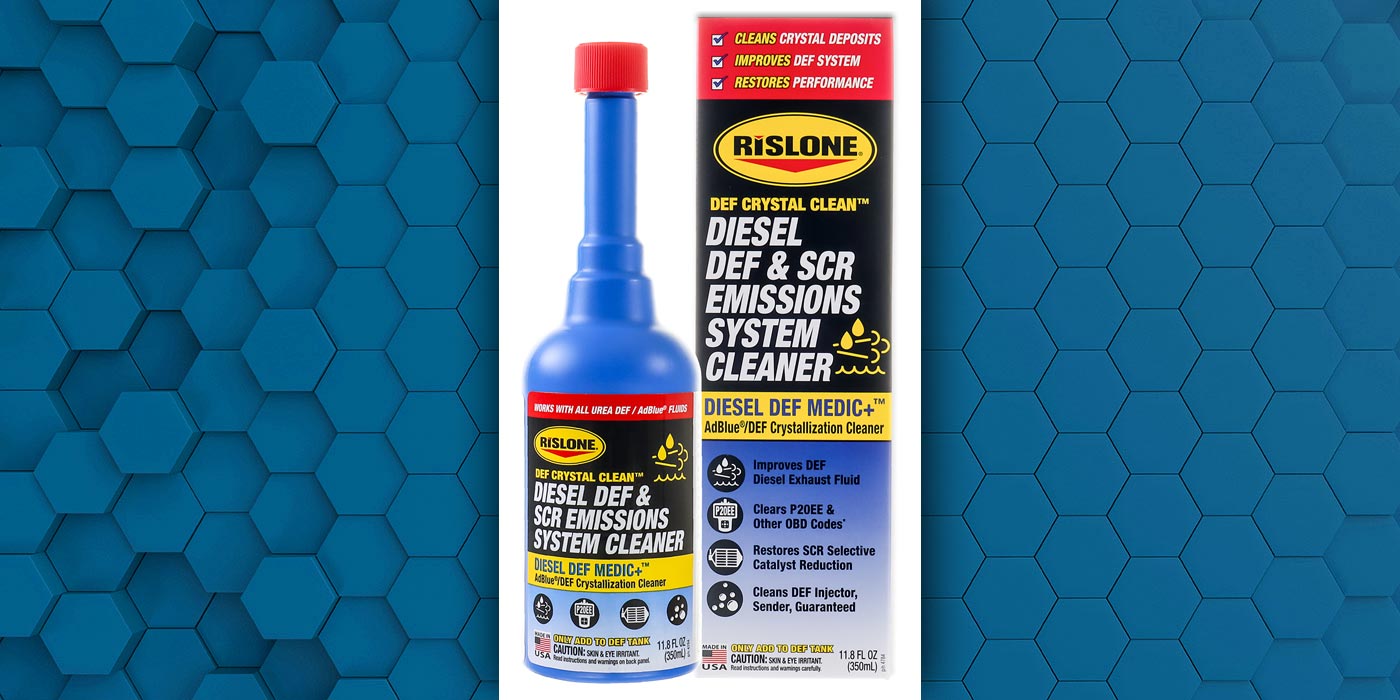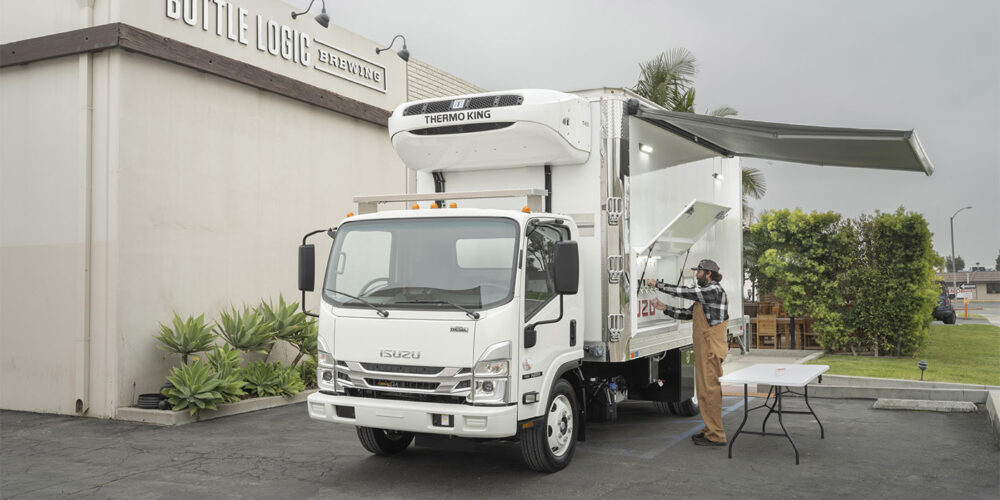A good program helps a fleet know its true cost-per-mile
Fleets know they need to have good tire management to control costs, but setting up the right program can be a challenge. Many fleets work with their suppliers and count on them to provide cradle-to-grave service. However, even the best supplier-support programs require fleets to provide some basic tire care. By establishing a consistent routine of tire condition monitoring, good record-keeping and tire performance review, fleet managers can put together a comprehensive tire maintenance plan that will help to extend tire life and, ultimately, save costs.
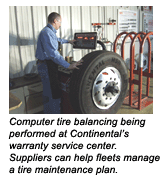
Getting started
Among the first things needed for a useful tire management plan are clear goals and benchmarks by which to measure your program’s performance. “Set targets for maintenance, then a way to track them so that those targets are maintained and show that improved tire performance is a result of maintaining those targets,” says Guy Walenga, director of engineering for commercial products and technology for Bridgestone Firestone North American Tire (BFNT). He believes having a maintenance plan gives you a tool to measure your costs, make sure you’re doing what you’re supposed to be doing to keep those costs in line, help measure improvements, select new technologies and determine if they work. Targets should include the air pressure for each steer, drive and trailer tire –– not only to be checked, but also maintained. “Another thing to check is tire tread depth,” says Walenga, “so you can follow the performance of the tires and their miles-per-32nd rate of wear, which gives you a measure of your cost-per-mile.” Additionally, he says, “You can now see how far the tire is worn and use the information to budget your purchases instead of making tire replacement a crisis response.”
What is needed to implement a tire maintenance plan? “First, a fleet has to have the determination to save money,” says Doug Jones, customer engineering support manager for Michelin North America. He says that to have a good tire management plan, fleets need to understand their current cost-per-mile, they need to understand the tire application; also, there needs to be some driver education and there needs to be accountability.
Understand conditions the tires on your equipment will face: what loads, types of roads and even the climate, says Roger Stansbie, director of research and development for commercial tires, Continental Tire of the Americas. This knowledge will be helpful later to interpret observations of inflation and tread wear, and where to look for improvement. A tire policy is one of the tools to put these needs into action, according to BFNT’s Walenga. It’s helpful not only for the fleet planning tire purchases, but to help the tire supplier. Items should include what tires and treads are being used for steer, drive and trailer positions, whether these will be retreaded, moved on to other positions, and what repairs and tread depths will be tolerated. Also worth noting is the anticipated date when the fleet needs to buy specific tires. Once all of this is codified on a list, the dealer and fleet will both understand what service is expected, what work will be done and by whom, and what exactly the fleet is paying for. A tire policy “helps communication dramatically,” says Walenga, “and makes sure that everyone who touches the tire is aware of what’s going on.” Michelin’s Jones agrees that a written plan shared with all is essential to a successful tire management plan. “Whatever plan you have, it needs to be written, well communicated, enforced and measurable,” he states. “You can have the best plan in the world, and if nobody knows about it outside of the main office, it’s not going to benefit you.” Everyone from the driver, the technician doing the PM, to the fuel island help needs to know what your tire maintenance program is, Jones explains, and that program needs to be to enforced, so tires are checked at the recommended intervals.
Inspect, collect, analyze
In order to have an effective tire management plan, you need to have good information that is consistently collected and reliable. Inspecting and monitoring tires can be risky and dangerous, warns Continental’s Stansbie. You need to have trained, qualified personnel to handle what can be a risky and dangerous article, he says, especially in the circumstance of inflating a tire run low that may have its structural integrity compromised. Continental totally supports and participates in the ATA’s Technology and Maintenance Council (TMC), Stansbie notes, because it offers various best practice papers on tire maintenance and tire tracking. “It’s an invaluable source,” he says, “because it’s not just one tire manufacturer talking, it’s a meeting of minds among many of the major tire manufacturers.”
A good plan needs to have a system of air pressure checks. “The pre- and post-trip inspections are critical,” says Michelin’s Jones. Although the driver has that responsibility, have someone in your yard assigned to check all the wheels on a weekend, he suggests, making sure the tire pressures are maintained. It’s about “hands and eyeballs on tires,” says Jones. “Nothing beats having a person looking at the tire, checking the air pressure with a calibrated gauge, and making the determination whether that tire needs air.” He emphasizes the plan needs to include having someone walking the yard whenever the vehicles are domiciled, or whenever one comes in for maintenance, checking all the tires –– at least once a week. “Any technician that puts and keeps air in a tire, we like,” adds BFNT’s Walenga. Checking inflation and tread depth means someone is actually looking at and touching those tires, he explains. This person can help identify and track problems, such as nails, cuts, chips, cracks, or unusual wear. If these problems are caught during normal PM in your yard on your terms at your costs, it can save hundreds of dollars on roadside service and late delivery penalties.
Continental’s Stansbie says, “It can’t be emphasized enough. The inflation pressure is the lifeline of the tire.” He continues, “Without the correct inflation for the load you’re carrying, you’re on the road to disaster and financial loss.” Check inflation pressures every time a vehicle goes out, he advises.
Tim Richards, project manager for line-haul commercial tires at Goodyear, says that closely monitoring inflation pressure is critical in extending tire life. Technicians also should check for proper alignment, wheel bearing and wheel condition, and suspension components, he says. During PMs, check axle ends and vehicle alignment, says Michelin’s Jones. Poor alignment can lead to tire scuffing that in its extreme, can cost a tire 50 percent of its useful life, says Continental’s Stansbie.
Have your people check tires regularly for signs of irregular wear, cuts to the belt, impact damage, poor mounting, chafing in the bead area, as well as chronic under-inflation. And be aware that not all tire injuries happen on the road. “Parking lots can be a source of a lot of damage,” notes Stansbie. “Curbs, stones, debris such as bolts and nails can destroy a tire.” Regular sweeps around the yard can be scheduled into a tire management plan.
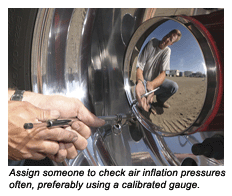
All of these tire pressure and condition observations need to be recorded routinely and accurately, or else the information noted by a tech or driver simply falls through the cracks. Capture the information by handheld device, form data-entry spreadsheet or fleet management software, suggests BFNT’s Walenga. At its website (www.bridgestonetrucktires.com/us_eng/recordkeeping/index.asp ), BFNT offers a downloadable, printable fill-in Vehicle Inspection Work Sheet to track tires by vehicle, position, condition, inspector and other categories. Continental’s Stansbie likes Bluetooth wireless-enabled handheld devices to collect and transmit tread depth and pressure data. As a simpler solution, he suggests having a tech speak the air pressure and tread depth into a tape recorder, so that information can later be written down. Although there are many software packages that can help track tire data, Stansbie still likes simple spreadsheets, even though they have no automatic prompts.
The keys to good record-keeping are consistency and accuracy, Michelin’s Jones advises. “And you don’t keep records just for the sake of keeping records; you need to have some way of analyzing the data you’re collecting.” It should guide you on purchases, and it can tell you not only about the tires, but when certain vehicle wheel positions have different wear due to problems with the axle end or drums. “It can also tell you about your maintenance practices and how well the vehicles are maintained, so make sure you use the information that you’re given,” Jones emphasizes.
New technology in the form of radio frequency identification (RFID) can help track tires more efficiently. RFID tags added on or built into the tire can provide a unique identification of the asset, such as its DOT number, that can be easily read and entered into tracking software. There are no separate sensors or batteries to maintain, plus they are inexpensive and durable, says BFNT’s Walenga. He notes that there are efforts industry-wide to standardize the RFID tags’ readability regardless of the instrument used, and some of the tags are read-write capable to allow data to be added. RFID is no substitute for hands and eyes on a tire, he cautions, but such devices offer improvements in collecting and managing the tire’s data, maintaining inventory and reordering information.
Scrap tire analysis
Tires that end up in the scrap pile can reveal valuable clues about the reasons for their removal. “Scrap tire analysis is an excellent source of information,” says Continental’s Stansbie. It can tell you if there is a generic problem in the fleet and helps to identify and correct types of loads, road conditions, equipment problems or tire selection that may be causing wear. BFNT’s Walenga adds that its dealers offer scrap tire analysis, and it educates everybody about why a tire came out of service. “Many salvageable tires sitting in scrap piles could be repaired and put back into service,” he relates. As an aid to describing scrap tire conditions, BFNT offers a downloadable Scrap Tire Survey Form (at the website given above). Scrap analysis tells you why a tire is coming out of service, says Michelin’s Jones, such as if there are vehicle issues or the wrong tire is being used in the wrong application. And choosing the right tires for the application is largely overlooked in extending tire wear, according to Goodyear’s Richards. Tires with the correct tread depth and composition for driving conditions will last longer, he notes. “There’s a misconception that a tire with deeper tread will always achieve more miles to removal,” Richards says. “However, this is not always the case. If you put too much rubber –– particularly in line haul applications –– on the road surface, tread elements and blocks will ‘squirm,’ leading to irregular wear and faster tread wear.”
Include your tire suppliers
Tire suppliers can be an important part of any tire management plan. Suppliers can recommend tires for various applications in the fleet, the routes and position, says Michelin’s Jones. The dealers can serve as liaison with the manufacturer, offer advice on retreadability and can assist in scrap tire analysis. Tire suppliers can offer services as a package that can range from providing tire repairs and inflation monitoring to purchase management and technician training. Michelin’s Business Solutions is a tire maintenance program fleets can use to outsource the responsibility for purchases, tire mounting, yard checks and scrap analysis. The company’s Bib Trax program offers a method to control inventory and track how many times a tire has been retreaded and repaired. Continental primarily works through its dealer network, but does offer ContiTrac, which is an internal tracking tool for its sales force that it shares with its customers. “Our salesmen engage with fleets in a program where we will track the tires for them,” Continental’s Stansbie explains. BFNT’s Walenga notes that dealers can help with the all-encompassing aspects of a tire management plan, from checking pressures, making repairs, to changing out tires. This sort of arrangement requires a lot of trust between the fleet and the dealer, “and you don’t get that trust if there’s no personal relationship,” Walenga notes. “It’s important that the fleet and dealer talk to each other, get to know each other’s business,” he continues, “and build trust to establish a program that they both can live with.” He adds the dealer can also prove valuable in handling retreads, and to help a fleet make decisions about what tread patterns to buy, whether to buy tires or mounted assemblies, to track their own casings or simply exchange cores.
Consider retreading
Tire casings that support multiple retreadings help increase a tire’s cradle-to-grave value. “In commercial tires, it’s all about the casing, which is built for multiple retreads,” says Goodyear’s Richards. He explains, “Truck fleet customers ultimately evaluate cost-per-mile with their tire and wheel position, which is determined by how many miles are delivered by the original tread, as well as the cost and mileage of its first and second retreads.” According to Richards, lesser-performing tires typically provide fewer miles in the beginning and might not support multiple retreads. “Yes, they cost less, but you end up buying more tires and forgoing multiple retreads that save money in the long run,” he says. “Those in the know, focus on cost per mile, not initial tire cost.”
Richards points out that while some line haul drivers are able to achieve 200,000 miles on steer tires and double that on drive tires, many operators would be happy to simply improve their tire mileage. “Starting with top-quality tires and a sensible tire management program can deliver tire mileage and fuel economy that result in competitive advantages,” he says.
Michelin’s Jones advocates retreading because he says the benefits are great. A casing can be retreaded for about half the cost of a new tire, he notes, and can be retreaded three, four, even five times. “In order to maximize your investment,” he says, “retreading should be a part of any good tire maintenance program.” Although Continental is not directly involved in the retreading process in the U.S., the company does support retreading and works with the major retreaders.
Other benefits
There are other benefits to having a comprehensive tire maintenance plan, with safety at the top of the list, according to Michelin’s Jones. If a fleet has a good tire maintenance program and it follows it, there will be less down time on the road, less risk of accidents from tires not being properly maintained, and better fuel economy from rigorously monitoring and maintaining air pressure and wheel alignment. Tires can go farther before removal, and with fewer tires purchased, fleets can achieve a reduced overall cost-per-mile. That means there is a monetary benefit as well as the increased safety and up- time, Jones says.

